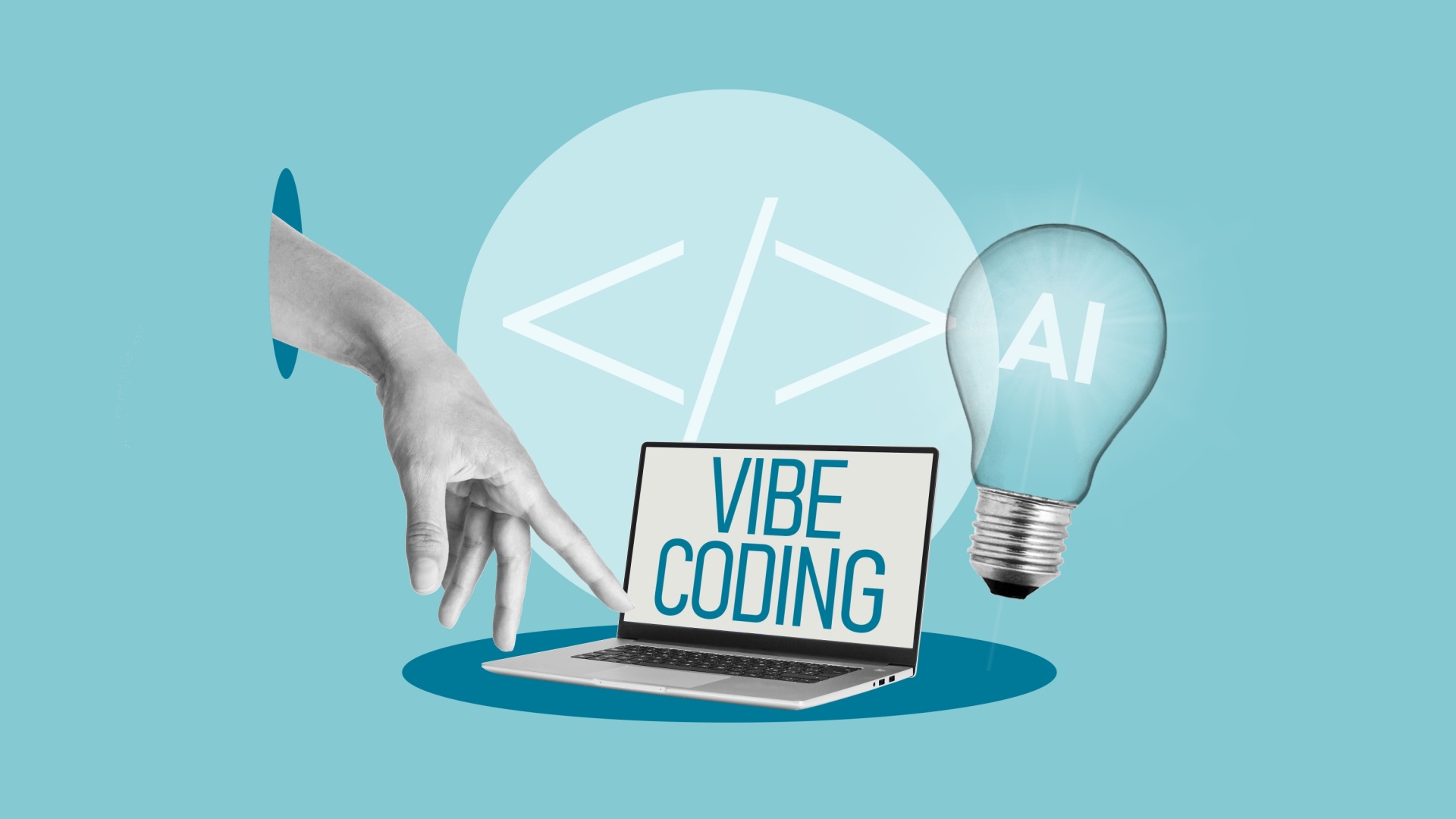SearchGPT: What you need to know about OpenAI’s search engine
Unpack the key features and marketing insights of SearchGPT, OpenAI’s innovative search tool and its potential to rival Google’s dominance.
With its characteristic cheerfulness, ChatGPT will tell you that the digital media landscape is “rapidly evolving.”
Google is regularly updating its algorithm, AI is getting smarter by the day and new tools are entering the market faster than fashion trends, which go in and out of style. That can mean opportunities and challenges for us.
One of the most talked-about evolutions to the search landscape is OpenAI’s SearchGPT, a product that could rival Google’s dominance soon.
At my agency, we recently gained early access to SearchGPT. Below are our takeaways about this new tool and its implications for digital marketing.
What is SearchGPT and how does it work?
SearchGPT is an AI-powered search engine that combines the strengths of traditional search engines with the advanced conversational abilities of large language models. It delivers answers to user queries using real-time information from across the web.
Rather than returning a list of links for users to sift through like traditional search engines, SearchGPT provides direct answers, summaries and insights based on an understanding of context and the user’s intent.
OpenAI doesn’t clearly state the exact details of how SearchGPT works, however, we can surmise that it uses something akin to retrieval augmented generation (RAG) which is a popular approach used by other AI search engines including, Perplexity and Google AI Overviews.
RAG is designed to reduce the likelihood of hallucinations in responses by integrating information from a database into the LLM response to enhance accuracy.
The model converts the search query into numerical embeddings that capture its meaning and searches a vector database containing trusted information sources. In this case, the web index is most likely provided by Bing based on OpenAI’s partnership with Microsoft.
By retrieving the most relevant content, SearchGPT can generate precise responses while linking back to the original web content, ensuring transparency and reliability.
The retrieved sources serve as additional context for the language model to accurately answer the user’s query.
Key features of SearchGPT include:
- Conversational interface: Users can interact with SearchGPT in a more natural, dialogue-like manner.
- Direct answers: Instead of a list of links, SearchGPT provides concise, relevant answers to queries.
- Citations panel: A sidebar displays the sources used to generate the response, with links to the original content.
- Follow-up questions: Users can ask additional questions to explore topics further, creating a more interactive search experience.
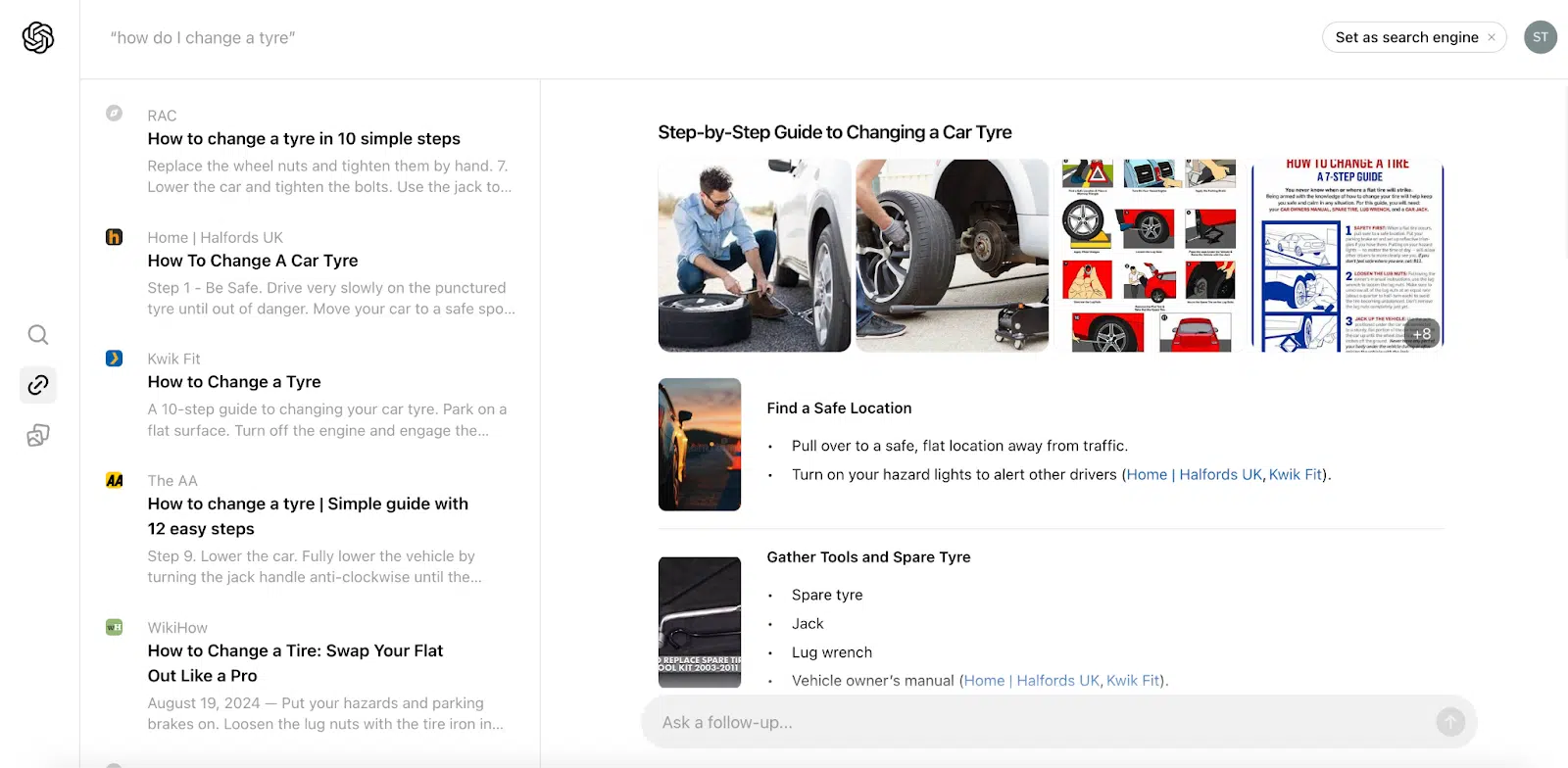
How does SearchGPT compare to Google AI Overviews?
My initial impression of SearchGPT is positive; it certainly outperforms Google’s AI Overviews (AIO).
While SearchGPT may result in fewer clicks for informational terms – and mostly for low-intent searches – in my opinion, this shift broadens the search ecosystem and opens new doors to connect with customers beyond traditional Google SERPs.
Google’s AIO still primarily relies on traditional search, with the addition of an LLM-generated response at the top of the page, which feels more like an enhancement of rich snippet results than a full transformation. Non-tech-savvy users may not notice a significant difference.
However, for marketers, two key distinctions stand out:
- Citations.
- Conversational search.
Google’s AIO uses an icon for references, offering less transparent citations, while SearchGPT mostly links directly from the publication’s name, which could impact click-through rates.
Additionally, Google’s AIO is far less conversational. In contrast, SearchGPT allows users to build on the initial response by expanding queries using the original web content, creating a more interactive experience similar to ChatGPT’s conversational thread UI.
This means marketers might find opportunities with SearchGPT to develop content strategies that cater to a much wider range of conversational queries, encouraging users to explore content in more detail.
5 key implications for digital marketers
1. Search is about to become more conversational
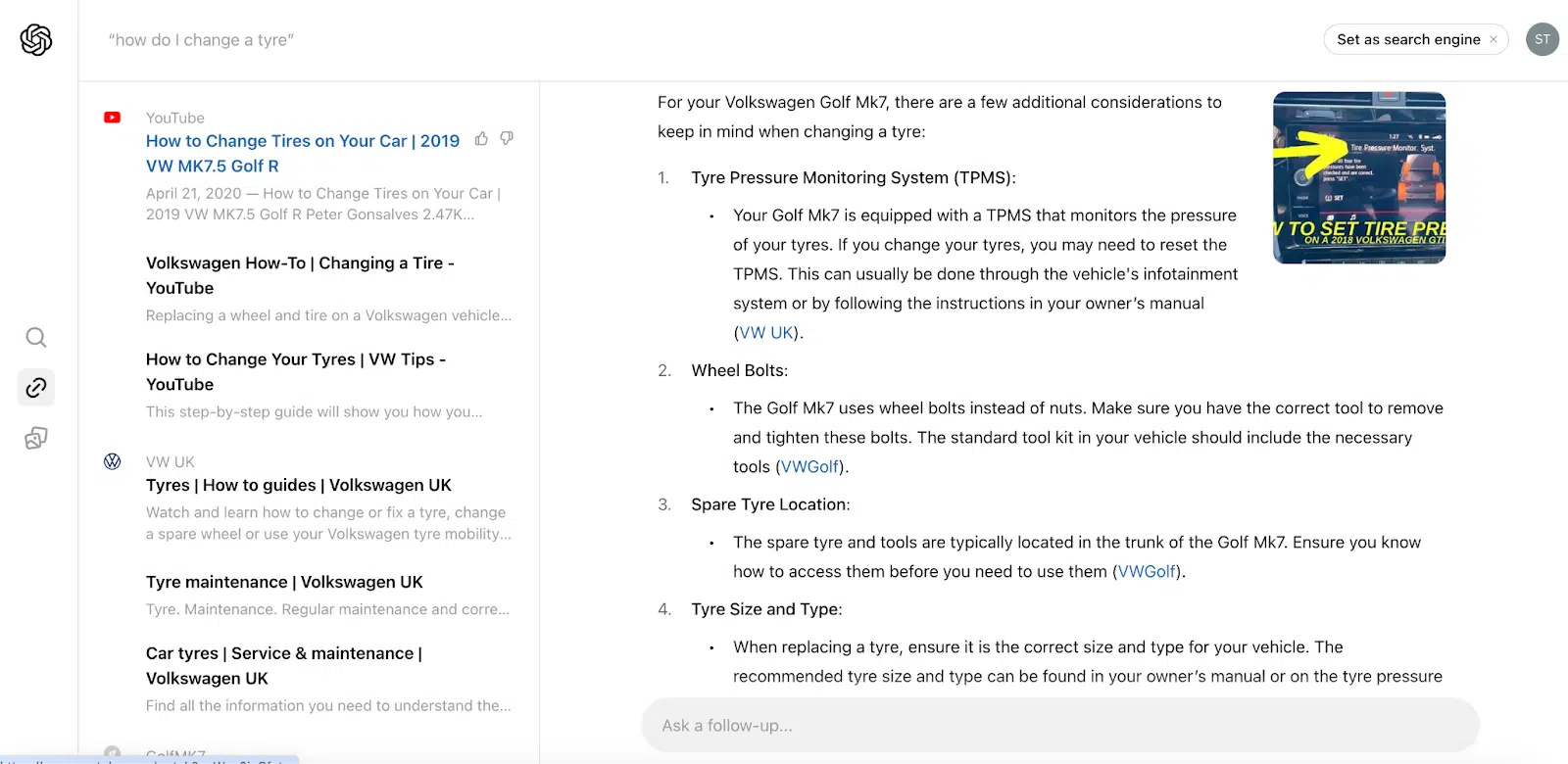
SearchGPT’s natural language processing capabilities allow for more nuanced, dialogue-like interactions. It can understand the context and meaning behind words, which means keyword research is likely to change dramatically.
Due to its conversational nature, users are expected to ask a broader range of questions, which presents marketers with opportunities to create highly targeted content.
Instead of focusing solely on translating queries into keywords, marketers will need to understand the key topics and questions users are exploring and develop content that directly addresses these needs.
Content should be engaging, written naturally and designed to meet user intent rather than merely optimizing for algorithms. This transition emphasizes the importance of creating content that resonates with users on a deeper level.
2. Incorporate rich media into your strategies
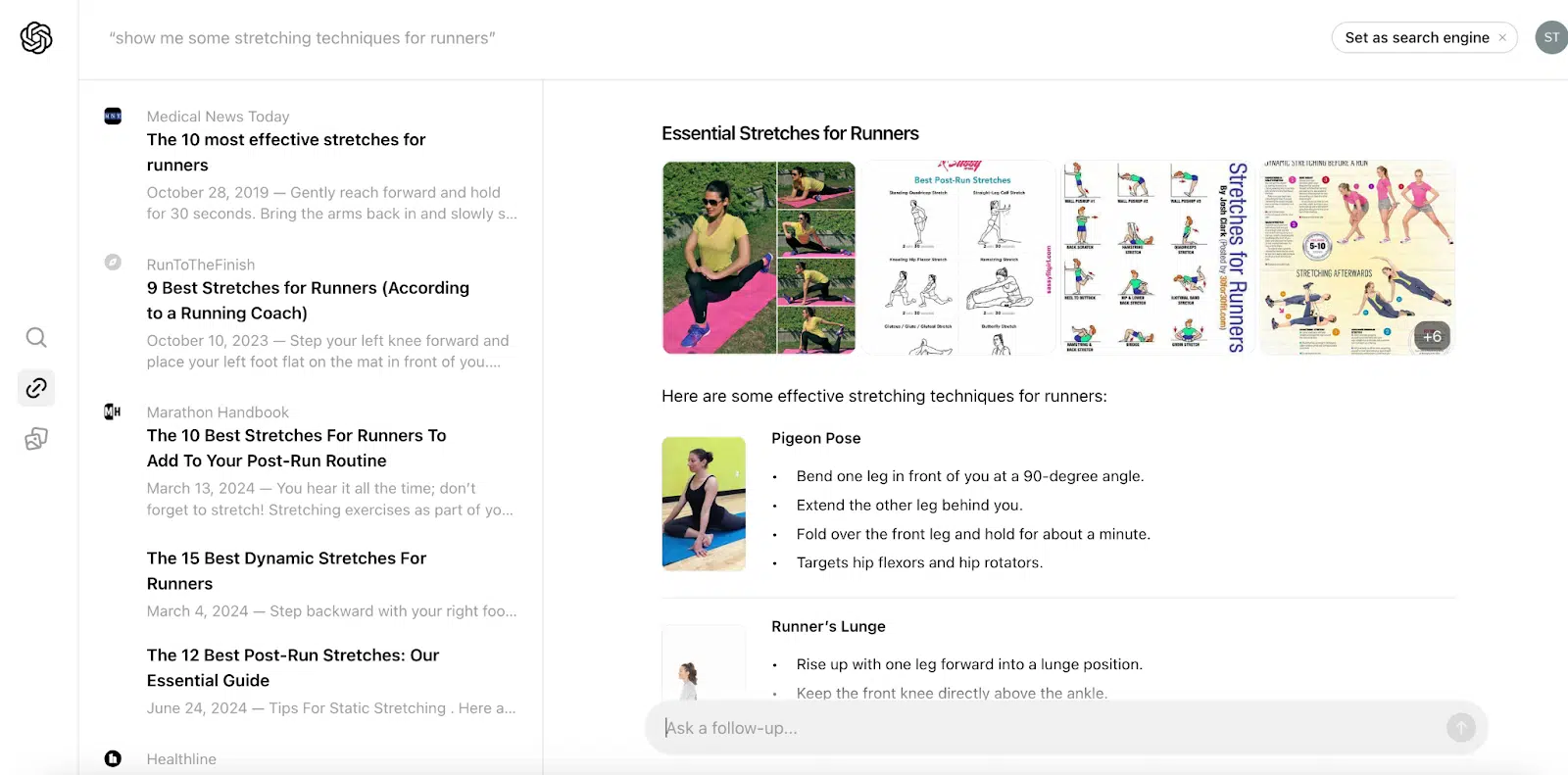
A multimedia strategy has been crucial in marketing for years and its importance is set to grow even further. SearchGPT has the capability to reference and describe various types of media beyond just text.
Integrating videos, infographics and interactive elements into your content will enhance its value for SearchGPT.
Although for AI, descriptive text may become less necessary for multimedia content because it can understand imagery, it’s still important for your media to be well-labeled and contextually enriched.
This is to ensure your content remains inclusive and accessible to all end users, as well as being accessible and relevant to AI models, improving its effectiveness in AI-driven searches.
Dig deeper: Visual optimization must-haves for AI-powered search
3. Earned media will remain important
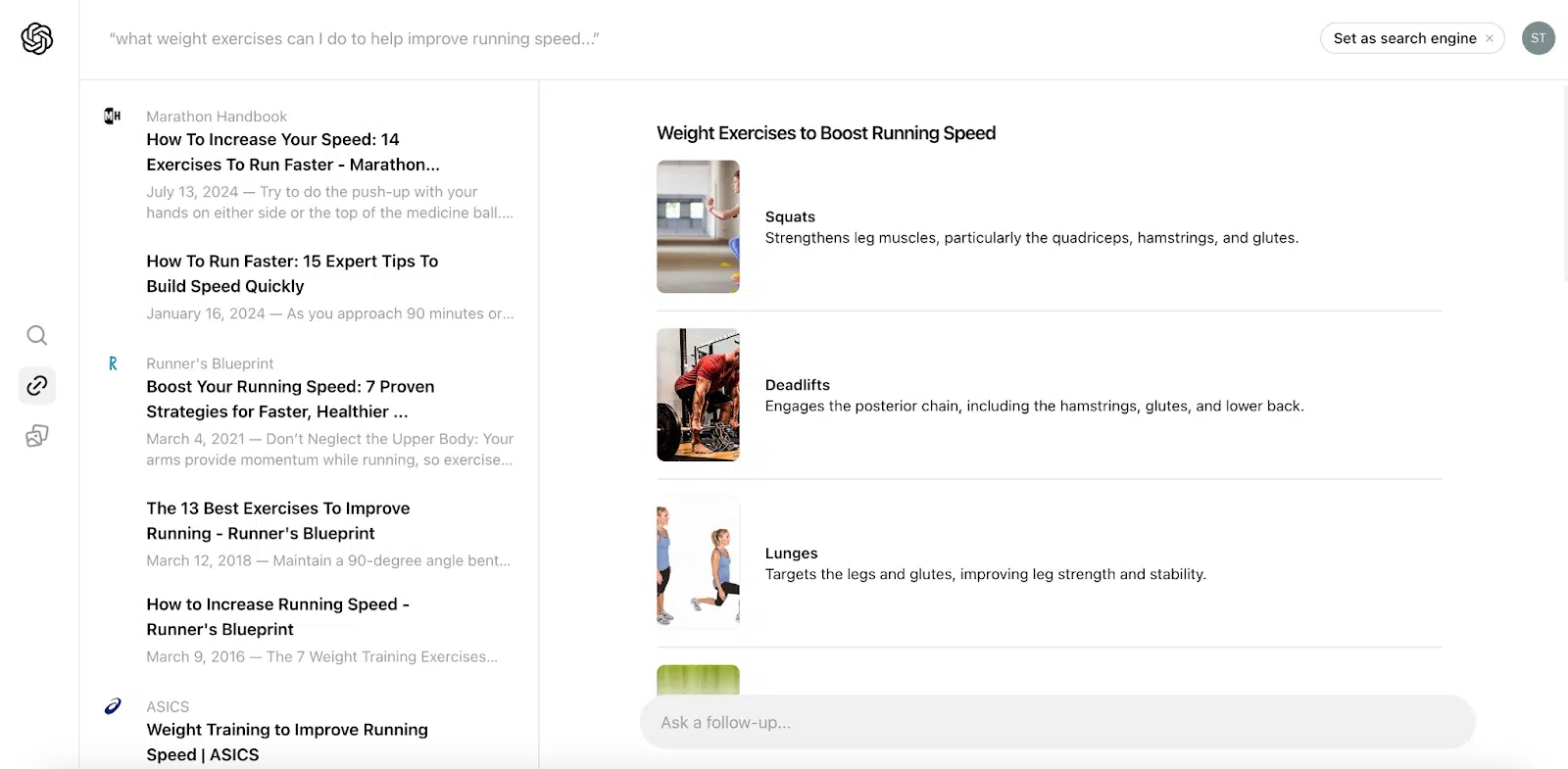
SearchGPT is likely to prioritize high-authority publications, meaning digital PR and thought leadership may become even more important.
What’s more, at least right now, SearchGPT seems to link out to content creators more than Google does, which may offer brands increased opportunities to boost awareness and traffic.
OpenAI’s recent partnerships with Conde Nast, The Associated Press and Vox highlight the value of content creators and underscores their role in the success of AI-powered search.
Marketers should consider targeting high-visibility content sources used by SearchGPT to enhance brand inclusion in its responses.
Developing relationships with authoritative publications and focusing on earned media can improve your chances of being featured in valuable AI-generated content.
4. High-quality content still rules them all
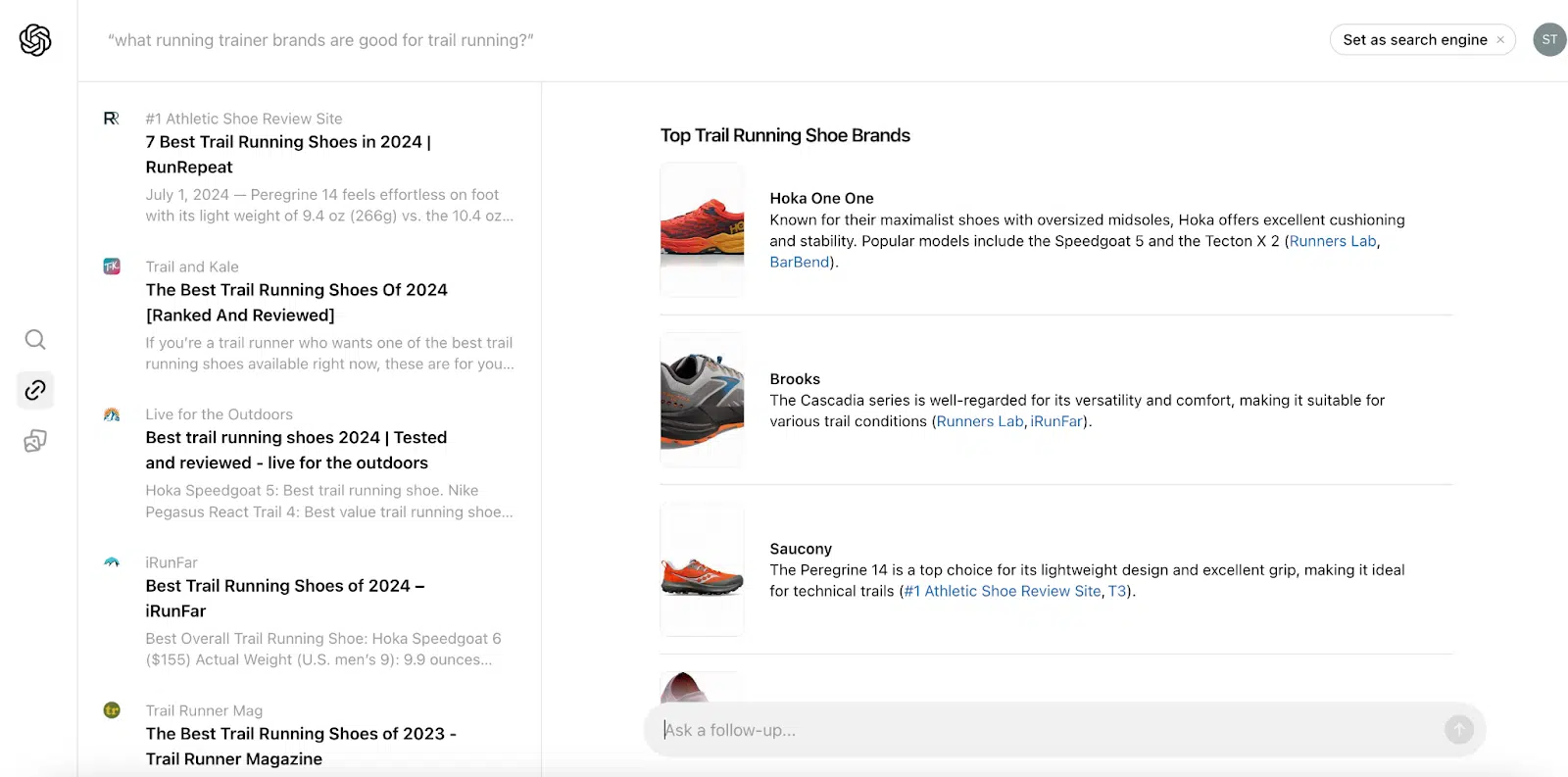
SearchGPT places a premium on relevant, up-to-date information, making consistent content optimization essential.
High-quality content is critical for maintaining audience engagement and increasing the likelihood of being referenced by SearchGPT. This focus on quality can drive more traffic and enhance engagement, providing a competitive edge for your brand.
Regular updates and accuracy are key to retaining relevance in the AI-driven search landscape. That means more traffic and engagement on your site and ultimately, a competitive edge as a brand.
Dig deeper: 6 guiding principles to leverage AI for SEO content production
5. Adapt your analytics and metrics
Marketers should consider tracking visibility through prompts and brand mentions within LLM responses – tracking a collection of prompts you believe your potential customers will be using rather than traditional rankings.
Traditional metrics like click-through rates (CTR) and page rankings will also become less relevant with AI-driven search.
Marketers should focus on new metrics like the accuracy of AI-generated answers that reference their content, user engagement levels and the impact of AI on brand visibility.
Metrics like these will provide better insights into how effectively your content is performing in the age of SearchGPT.
SearchGPT: The next evolution in AI-powered search
SearchGPT is new but it’s already clear that the future of digital marketing is going to be much more conversational and will move away from the traditional 10 blue links from Google. We’re still advising our clients that standard SEO best practices remain relevant.
However, brands that are not invested in earning high-quality media coverage and links through digital PR should consider adding this to their 2025 budget.
OpenAI will likely prioritize authoritative publisher content to answer AI search queries over a brand’s own website – and you don’t want to miss out on this “fast-paced evolution.”
This article was co-authored by Steve Walker.
Contributing authors are invited to create content for Search Engine Land and are chosen for their expertise and contribution to the search community. Our contributors work under the oversight of the editorial staff and contributions are checked for quality and relevance to our readers. Search Engine Land is owned by Semrush. Contributor was not asked to make any direct or indirect mentions of Semrush. The opinions they express are their own.

